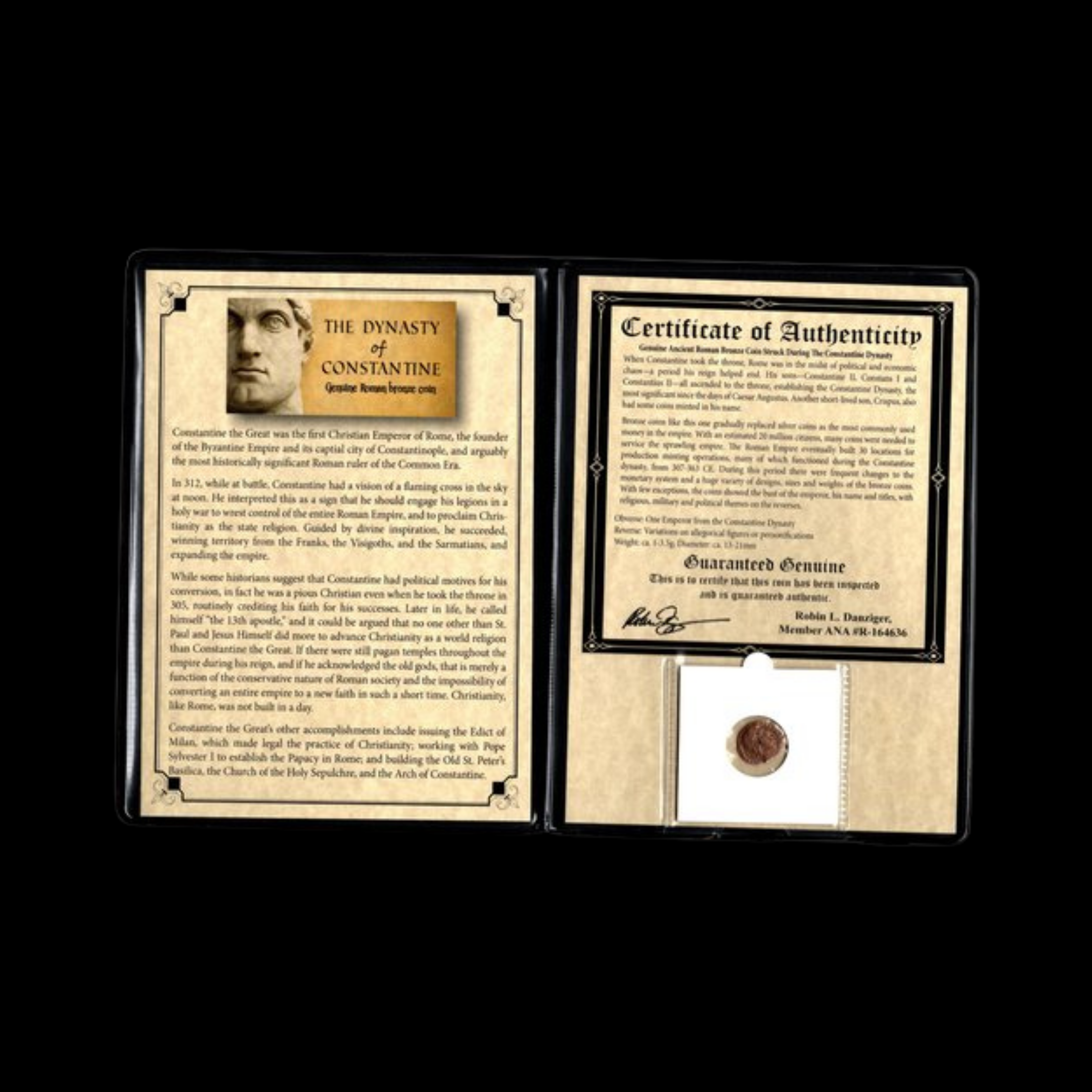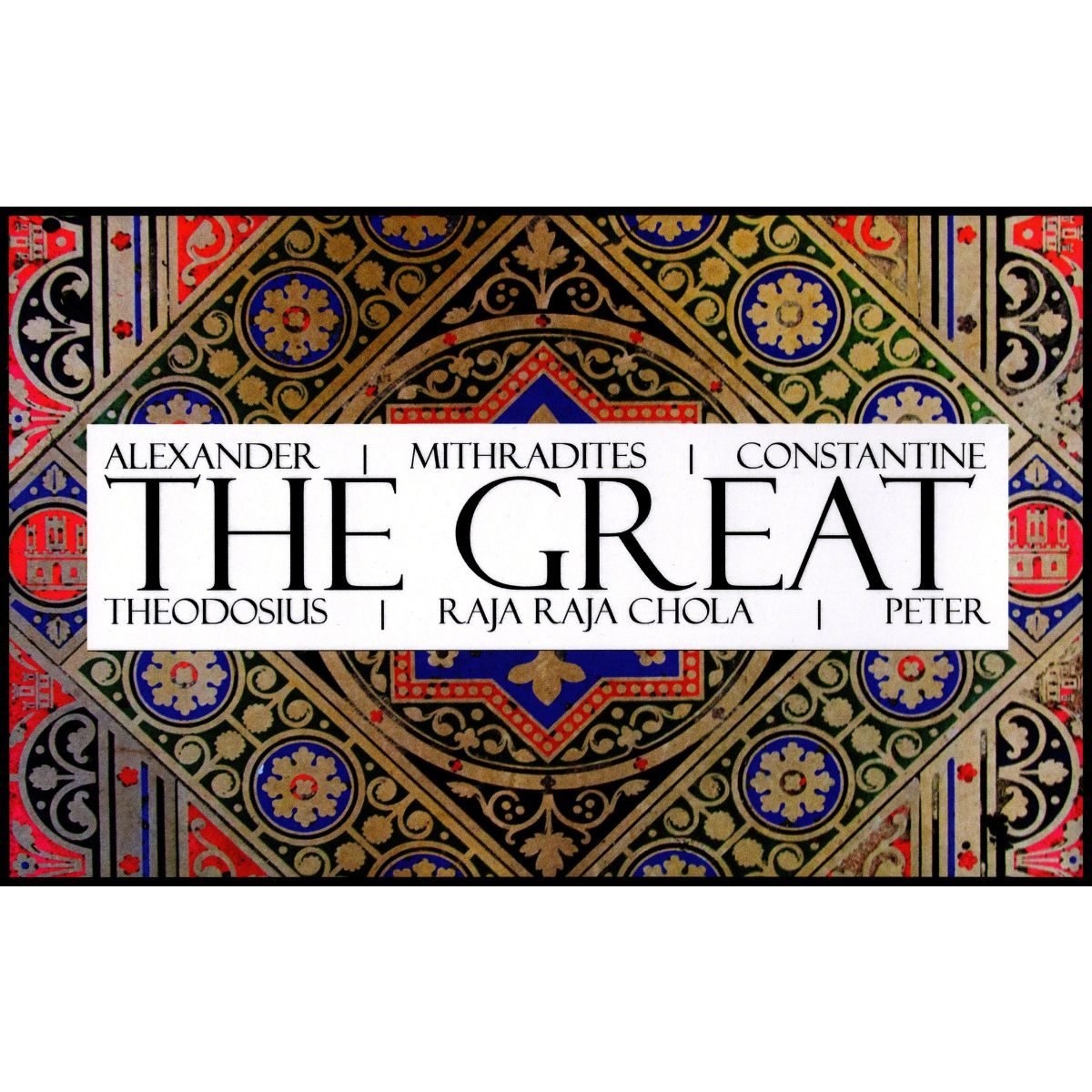 Image 1 of 4
Image 1 of 4

 Image 2 of 4
Image 2 of 4

 Image 3 of 4
Image 3 of 4

 Image 4 of 4
Image 4 of 4





Ancient Greek Silver Coin of Alexander the Great (about 2,300-2,350 years ago)
This impressive silver tetradrachm was issued during or shortly after the reign of Alexander the Great, one of history's most legendary conquerors. These large, high-quality silver coins helped facilitate trade throughout Alexander's vast empire and spread Greek cultural influence across the ancient world from Egypt to India, becoming one of the first truly international currencies of the ancient Mediterranean and Near East.
Coin Description:
Front side: Portrait of a young Heracles (Hercules) wearing a lion's skin headdress, facing right. The muscular hero is shown with idealized features, sometimes interpreted as a subtle representation of Alexander himself
Back side: Seated figure of Zeus, king of the Greek gods, enthroned and holding an eagle and scepter, with Greek inscription "ΑΛΕΞΑΝΔΡΟΥ" (of Alexander) and sometimes additional symbols or monograms identifying the specific mint
Technical Details:
Silver composition of high purity
Denomination: Tetradrachm (equivalent to four drachms, a substantial sum in ancient times)
Weight: Typically 16-17 grams
Presented in a display box for collecting and viewing
Minted approximately 336-280 BCE (during Alexander's lifetime and continuing after his death)
Condition depends on specific example
Historical Significance: Alexander III of Macedon (356-323 BCE) created one of the ancient world's largest empires in just 13 years, extending from Greece to northwestern India. His tetradrachms were produced in enormous quantities at numerous mints throughout his conquered territories, helping unify this vast empire economically. What makes these coins particularly remarkable is their longevity—they continued to be minted long after Alexander's death in 323 BCE, with some regional kingdoms producing them for over 150 years after he died. The standardized weight and silver content made them trusted internationally, while the imagery communicated Alexander's claimed divine heritage (through Heracles) and connection to Zeus. These tetradrachms represented not just currency but also a powerful propaganda tool spreading Greek culture (Hellenism) throughout the Near East and Asia, permanently altering the cultural landscape of these regions even after Alexander's empire fragmented into competing kingdoms.
This impressive silver tetradrachm was issued during or shortly after the reign of Alexander the Great, one of history's most legendary conquerors. These large, high-quality silver coins helped facilitate trade throughout Alexander's vast empire and spread Greek cultural influence across the ancient world from Egypt to India, becoming one of the first truly international currencies of the ancient Mediterranean and Near East.
Coin Description:
Front side: Portrait of a young Heracles (Hercules) wearing a lion's skin headdress, facing right. The muscular hero is shown with idealized features, sometimes interpreted as a subtle representation of Alexander himself
Back side: Seated figure of Zeus, king of the Greek gods, enthroned and holding an eagle and scepter, with Greek inscription "ΑΛΕΞΑΝΔΡΟΥ" (of Alexander) and sometimes additional symbols or monograms identifying the specific mint
Technical Details:
Silver composition of high purity
Denomination: Tetradrachm (equivalent to four drachms, a substantial sum in ancient times)
Weight: Typically 16-17 grams
Presented in a display box for collecting and viewing
Minted approximately 336-280 BCE (during Alexander's lifetime and continuing after his death)
Condition depends on specific example
Historical Significance: Alexander III of Macedon (356-323 BCE) created one of the ancient world's largest empires in just 13 years, extending from Greece to northwestern India. His tetradrachms were produced in enormous quantities at numerous mints throughout his conquered territories, helping unify this vast empire economically. What makes these coins particularly remarkable is their longevity—they continued to be minted long after Alexander's death in 323 BCE, with some regional kingdoms producing them for over 150 years after he died. The standardized weight and silver content made them trusted internationally, while the imagery communicated Alexander's claimed divine heritage (through Heracles) and connection to Zeus. These tetradrachms represented not just currency but also a powerful propaganda tool spreading Greek culture (Hellenism) throughout the Near East and Asia, permanently altering the cultural landscape of these regions even after Alexander's empire fragmented into competing kingdoms.
This impressive silver tetradrachm was issued during or shortly after the reign of Alexander the Great, one of history's most legendary conquerors. These large, high-quality silver coins helped facilitate trade throughout Alexander's vast empire and spread Greek cultural influence across the ancient world from Egypt to India, becoming one of the first truly international currencies of the ancient Mediterranean and Near East.
Coin Description:
Front side: Portrait of a young Heracles (Hercules) wearing a lion's skin headdress, facing right. The muscular hero is shown with idealized features, sometimes interpreted as a subtle representation of Alexander himself
Back side: Seated figure of Zeus, king of the Greek gods, enthroned and holding an eagle and scepter, with Greek inscription "ΑΛΕΞΑΝΔΡΟΥ" (of Alexander) and sometimes additional symbols or monograms identifying the specific mint
Technical Details:
Silver composition of high purity
Denomination: Tetradrachm (equivalent to four drachms, a substantial sum in ancient times)
Weight: Typically 16-17 grams
Presented in a display box for collecting and viewing
Minted approximately 336-280 BCE (during Alexander's lifetime and continuing after his death)
Condition depends on specific example
Historical Significance: Alexander III of Macedon (356-323 BCE) created one of the ancient world's largest empires in just 13 years, extending from Greece to northwestern India. His tetradrachms were produced in enormous quantities at numerous mints throughout his conquered territories, helping unify this vast empire economically. What makes these coins particularly remarkable is their longevity—they continued to be minted long after Alexander's death in 323 BCE, with some regional kingdoms producing them for over 150 years after he died. The standardized weight and silver content made them trusted internationally, while the imagery communicated Alexander's claimed divine heritage (through Heracles) and connection to Zeus. These tetradrachms represented not just currency but also a powerful propaganda tool spreading Greek culture (Hellenism) throughout the Near East and Asia, permanently altering the cultural landscape of these regions even after Alexander's empire fragmented into competing kingdoms.
Alexander III of Macedon (Ancient Greek: Ἀλέξανδρος, romanized: Aléxandros; 20/21 July 356 BC – 10/11 June 323 BC), most commonly known as Alexander the Great,[c] was a king of the ancient Greek kingdom of Macedon.[d] He succeeded his father Philip II to the throne in 336 BC at the age of 20 and spent most of his ruling years conducting a lengthy military campaign throughout Western Asia, Central Asia, parts of South Asia, and Egypt. By the age of 30, he had created one of the largest empires in history, stretching from Greece to northwestern India.[1] He was undefeated in battle and is widely considered to be one of history's greatest and most successful military commanders.[2][3][4]
Until the age of 16, Alexander was tutored by Aristotle. In 335 BC, shortly after his assumption of kingship over Macedon, he campaigned in the Balkans and reasserted control over Thrace and parts of Illyria before marching on the city of Thebes, which was subsequently destroyed in battle. Alexander then led the League of Corinth, and used his authority to launch the pan-Hellenic project envisaged by his father, assuming leadership over all Greeks in their conquest of Persia.[5][6]
























